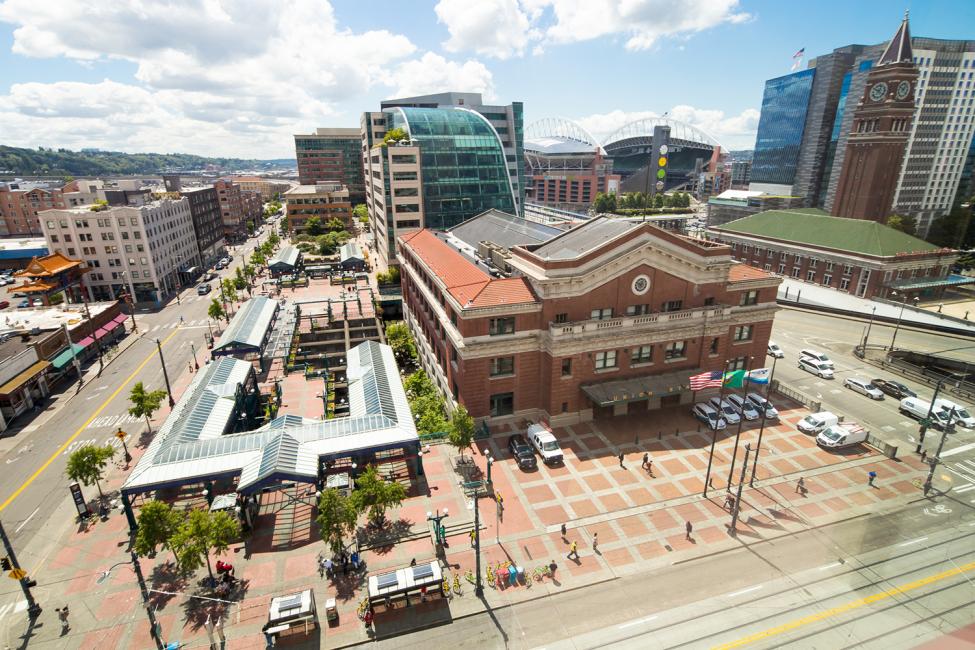At the System Expansion Committee meeting on Thursday, Nov. 14, Sound Transit staff shared results of additional studies of Chinatown-International District (CID) station options the Board requested in 2023. These studies considered ways to minimize or eliminate construction impacts and reduce the duration of construction, and ways to maximize regional and local connections.
As a reminder, the March 2023 motion identified preferred alternatives and other alternatives to study for the Ballard Link Extension project. The preferred alternative in the CID segment included the “South of CID” station, now known as the Dearborn Street Preferred Alternative, and shifted the Midtown Station south to the “North of CID” station location between James Street and Yesler Way. As part of the motion identifying the preferred alternative, the Board requested the additional studies that just wrapped up.
What we studied
After an extensive further study and engagement effort in late 2022 and early 2023, Sound Transit engaged independent experts to review the design for CID alternatives, construction approach and duration; and to offer new ideas on how to construct the 4th Ave Shallow Alternative in a way that reduces the construction duration and reduces community impacts.
We also looked at maximizing regional and local connections including a ridership assessment; studying differences to regional and local trips; developing pedestrian and transit access improvements; and refining station and transfer paths to improve passenger experience and accessibility.
Study findings are shared for the Dearborn Street Preferred Alternative, 5th Avenue Shallow Diagonal Alternative and the 4th Avenue Shallow Alternative, three of the seven alternatives currently being studied in the ongoing BLE environmental process.
What we learned
The high-level findings are below. Details are available on the BLE Participate Online site, including a click-and-learn activity to help you visualize the construction activities and duration, as well as the refinement ideas proposed by independent experts and others.
Construction durations differ between the three alternatives covered, based on drivers specific to each location:
The Dearborn Street Preferred Alternative is expected to take about 6-7 years to construct, with a limited number of construction duration drivers including a gas line and Seattle Boulevard.
The 5th Avenue Shallow Diagonal Alternative is expected to take about 5-6 years to construct with construction duration drivers including prioritizing minimizing business displacements, minimizing effects to historic buildings, and avoiding effects to the Historic Chinatown Gate.
The 4th Avenue Shallow Alternative is expected to take 10-12 years to construct and is much more complex, with construction drivers including very limited construction access, close proximity to the BNSF Railway, poor soil conditions, complex underground structures, and more. This duration estimate includes ideas incorporated from independent experts to reduce the duration of construction and community impacts.
In addition, the following cost drivers and risks have been identified as unique to the 4th Avenue Shallow Alternative:
Risk in further lengthening construction duration (beyond 10 to 12 years) due to stringent safety requirements and other restrictions with construction next to active BNSF Railway mainline tracks; delays could affect the entire BLE project schedule.
Additional scope to rebuild 4th Avenue viaduct.
Construction complexity due to construction next to and over the active BNSF Railway mainline tracks; lack of construction staging; and maintaining traffic and neighborhood access during construction.
Risk profile of the job will limit competition and increase the markup; and contractor bidding may be affected by needing bridge structure construction skills over a tunnel, in addition to tunneling skills.
Overall ridership and Link-Link transfers are expected to be largely similar between the alternatives, with some shifts in where boardings and transfers may occur between SODO and Westlake Stations.
Station access opportunities continue to be identified through BLE and South Downtown Hub planning and engagement efforts, in collaboration with the City of Seattle and King County, such as narrowing and calming Dearborn Street, improving the pedestrian experience at 4th and Jackson and other key corridors, and exploring improvements and activation opportunities within and around Union Station.
Finally, station design has continued to focus on refinements that improve station access and ensure stations are easy to navigate for all users, including a shifted north Dearborn Street Station Preferred Alternative to improve access to the CID.
What happens next?
These results are being provided for informational purposes and as resources for the Sound Transit Board and the public in advance of Ballard Link Extension Draft EIS publication in 2025, which will be followed by a public comment period and potential Board action to confirm or modify the preferred alternative.
In the meantime, the South Downtown Hub planning effort is ongoing. This partnership between Sound Transit, City of Seattle, and King County is also part of the additional study the Board requested in 2023 to develop pedestrian and transit access improvements. Learn more at the South Downtown Hub Participate Online site.
Stay engaged
Visit the BLE Participate online site to learn more about the Ballard Link Extension project and reach out to the project team with any questions at ballardlink@soundtransit.org.
There will be more opportunities to engage with the project online and in person as the environmental process progresses through next year. Sign up for project alerts to be sure you get all the details.
